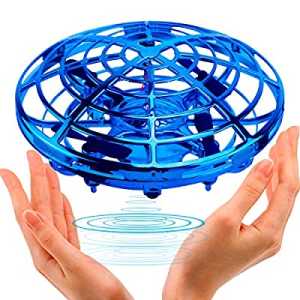
Understanding The Science Behind Immunizations

Immunization is one of the most powerful tools in modern medicine, preventing a wide range of infectious diseases that have historically caused significant morbidity and mortality. While most people are familiar with vaccines and their ability to prevent disease, fewer fully understand the science behind how immunizations work to protect our health. In this blog, we will explore the science behind immunizations, how they work, and why they are critical for public health.
What Are Immunizations?
Immunizations, often referred to as vaccinations, are treatments that stimulate the body’s immune system to recognize and fight off specific pathogens (such as bacteria or viruses) without causing the disease. This is done by introducing a harmless part of the pathogen, such as inactivated virus particles, weakened live viruses, or pieces of the bacteria. Once the body encounters the real pathogen, the immune system is already prepared to recognize and neutralize it.
How the Immune System Works
The immune system is our body’s defense mechanism, designed to protect us from harmful invaders like viruses, bacteria, and fungi. It consists of various cells, tissues, and organs that work together to detect and eliminate these threats. Here's a brief overview of how the immune system functions:
- Recognition: The immune system recognizes foreign invaders (antigens) through proteins on the surface of pathogens.
- Response: Once a pathogen is recognized, the immune system responds by sending immune cells (like T cells and B cells) to destroy or neutralize the threat.
- Memory: After the infection is cleared, the immune system "remembers" the pathogen. This memory allows the body to respond more quickly and effectively if it encounters the same pathogen in the future.
How Immunizations Work
Immunizations harness the body’s natural immune response to prepare it for future infections without exposing the individual to the risks associated with actual disease. Here’s how the process works:
- Introduction of Antigens: Vaccines introduce a form of the pathogen (or part of it) into the body. This could be in the form of a killed or inactivated virus, a weakened live virus, or a piece of the bacteria (like a protein). This component is called an antigen.
- Immune Response Activation: The immune system recognizes the antigen as foreign and mounts an immune response. This involves producing antibodies and activating T cells that target and destroy cells infected with the pathogen.
- Memory Cells: Once the immune system has eliminated the antigen, it produces memory B cells and T cells. These memory cells "remember" the pathogen and stay in the body long after the infection has been cleared.
- Protection Against Future Infections: If the body encounters the same pathogen in the future, the memory cells can recognize it immediately and launch a rapid and more effective immune response, preventing the person from developing the disease.
Types of Vaccines
There are different types of vaccines, each with a different method of stimulating the immune system:
- Inactivated (Killed) Vaccines: These vaccines contain viruses or bacteria that have been killed or inactivated so that they cannot cause disease. Examples include the polio vaccine and the hepatitis A vaccine.
- Live Attenuated Vaccines: These vaccines contain live viruses or bacteria that have been weakened so they cannot cause disease in healthy individuals. Examples include the MMR vaccine (measles, mumps, rubella) and the yellow fever vaccine.
- Subunit, Recombinant, and Conjugate Vaccines: These vaccines contain only pieces of the pathogen, such as proteins or sugars, rather than the entire organism. Examples include the HPV vaccine and the Haemophilus influenzae type b (Hib) vaccine.
- mRNA Vaccines: A newer type of vaccine, mRNA vaccines use messenger RNA to instruct cells to produce a protein that is part of the pathogen, which then triggers an immune response. The Pfizer-BioNTech and Moderna COVID-19 vaccines are examples of mRNA vaccines.
Worried about keeping your child safe from diseases in Seawoods? If you’re concerned about vaccinations, don’t hesitate to visit Kalkekar’s Cura Clinic, the trusted immunizations and vaccinations centre in Seawoods. Our specialists are here to guide and help you.
Why Immunizations Are Important
Immunizations play a critical role in preventing disease and promoting public health. Here’s why they are so important:
- Protection Against Serious Diseases: Vaccines protect individuals from serious, sometimes life-threatening diseases. For example, vaccines have led to the near-eradication of smallpox and have significantly reduced cases of polio, measles, and diphtheria worldwide.
- Herd Immunity: When a significant portion of the population is vaccinated, the spread of disease is limited, even among those who are not vaccinated. This is known as herd immunity, and it helps protect vulnerable populations such as infants, elderly individuals, and people with weakened immune systems.
- Prevention of Disease Outbreaks: Widespread vaccination helps prevent disease outbreaks by reducing the number of susceptible individuals in a population. When vaccination rates drop, outbreaks of preventable diseases can occur, as seen with measles and whooping cough in some areas.
- Cost-Effectiveness: Vaccines are a cost-effective way to prevent disease, reducing the need for costly treatments and hospitalizations. In fact, vaccines save billions of dollars annually in healthcare costs.
The Safety of Vaccines
Vaccines undergo rigorous testing in clinical trials to ensure their safety and effectiveness. The process typically involves several phases, from laboratory research to human trials, before they are approved for use by regulatory bodies like the U.S. Food and Drug Administration (FDA) or the European Medicines Agency (EMA).
Once approved, vaccines are continuously monitored for safety. Side effects are generally mild and temporary, such as a sore arm or low-grade fever, and serious side effects are extremely rare.
Addressing Common Myths About Vaccines
There are many myths and misconceptions about vaccines that can lead to hesitancy. Here are some common myths and the facts that dispel them:
- Myth: Vaccines cause autism.
Fact: Extensive research has shown no link between vaccines and autism. The original study that suggested this link has been discredited and retracted. - Myth: Vaccines contain harmful chemicals.
Fact: The ingredients in vaccines, such as preservatives and adjuvants, are safe in the amounts used and have been thoroughly tested. These ingredients help ensure the vaccine is effective and stable. - Myth: Natural immunity is better than vaccine-induced immunity.
Fact: While natural immunity can develop after infection, it often comes at the cost of severe illness or complications. Vaccines provide immunity without the risk of the disease itself.
Conclusion
Immunizations are a cornerstone of public health, protecting individuals from potentially life-threatening diseases and preventing the spread of infections in communities. Through understanding how vaccines work and the science behind immunization, individuals can make informed decisions about their health and contribute to the overall well-being of society. Vaccines are a safe and effective tool that help ensure a healthier future for everyone.
Author Bio
Article Comments
No Comments!
At present there are zero comments on this article.
Why not be the first to make a comment?
Similar Articles
Search Pages
Upgrade User Account
account to full use of editor,
including hyperlinks
Article Categories
There are zero sub-categories in this parent category.
There are zero sub-categories in this parent category.











